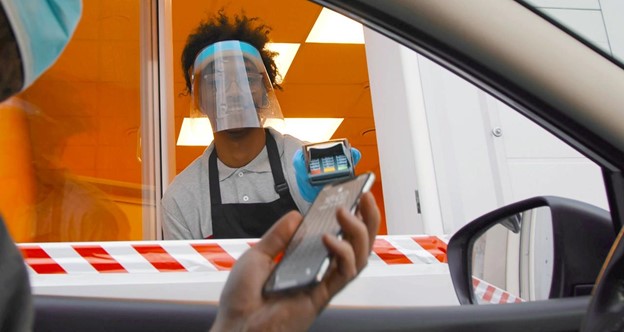Addressing a growing labor crisis among quick-service restaurants, startup Vistry is harnessing AI to automate the process of taking orders.
The company will share its story at the NRF Big Show, the annual industry gathering of the National Retail Federation in New York, starting Jan. 16.
“They’re closing restaurants because there is not enough labor,” said Atif Kureishy, CEO of Vistry, which is a member of the NVIDIA Inception startup accelerator program.
At the same time, customers are placing orders in more ways than ever: for pickup, in drive-thrus and via delivery services, as well as in dining rooms.
“There are new store formats, new configurations, new digital capabilities,” Kureishy said.
To help restaurants keep up, Kureishy, a veteran of both NASA and Booz Allen Hamilton, assembled a team that includes veterans of the semiconductor industry and Ivy League neuroscience programs.
While restaurant labor shortages are grabbing headlines, Vistry is tackling an opportunity driven by a labor shortage demographers have been predicting for decades.
As a result, the quick-service dining industry, which does $300 billion in sales each year in the United States alone, is just one of the industries that will need to find ways to get more done with fewer people over the long term.
To address this, Vistry is working to build an AI-enabled automated order-taking solution. It’s harnessing the latest natural language processing for menu understanding and speech and recommendation systems to deliver faster, more accurate order-taking and more relevant, personalized offers.
The system relies on NVIDIA Riva, a collection of technologies for building speech AI applications. It includes natural language understanding and speech recognition and synthesis capabilities. It also uses computer vision technology optimized with the NVIDIA Metropolis application framework.
Vistry’s platform, powered by the NVIDIA Jetson edge AI platform and NVIDIA A2 Tensor Core GPUs, goes beyond just an automated order-taking kiosk.
Vistry’s computer vision applications also help restaurants automate curbside check-ins. It can speed up drive-thrus and better predict how long it will take for customer orders to be ready. And it will track and trace orders for customers relying on food delivery services, Kureishy explains.
“Buyer behaviors are changing — the guest experience is not solely in the dining room anymore,” Kureishy said.
“Pandemic uncertainty continues to impact dining, along with consumer expectations of a seamless, operationally excellent experience on every platform and touchpoint,” said Susan Beardslee, principal analyst with ABI Research. “Behind the scenes, providers must enable integrated, near real-time digital solutions to address everything from supplies to staffing to delivery optimization.”
Vistry promises its solutions will be easy to deploy, fully integrated with existing restaurant systems, secure and private. They’ll also provide sophisticated real-time dashboards, so restaurant operators can better understand a growing number of sales channels — from drive-thru lines to dining rooms to delivery services.
“All the expectations have changed, all of us want food faster, and we want to make sure the quality is preserved,” Kureishy said.
Vistry is helping quick-service restaurants reduce drive-thru lines, predict when customers’ orders are ready, ensure food freshness, deliver curbside orders faster and optimize restaurant performance using AI and its analytics dashboard.
Who’s hungry?
Learn more about NVIDIA’s AI solutions for quick-service restaurants.
